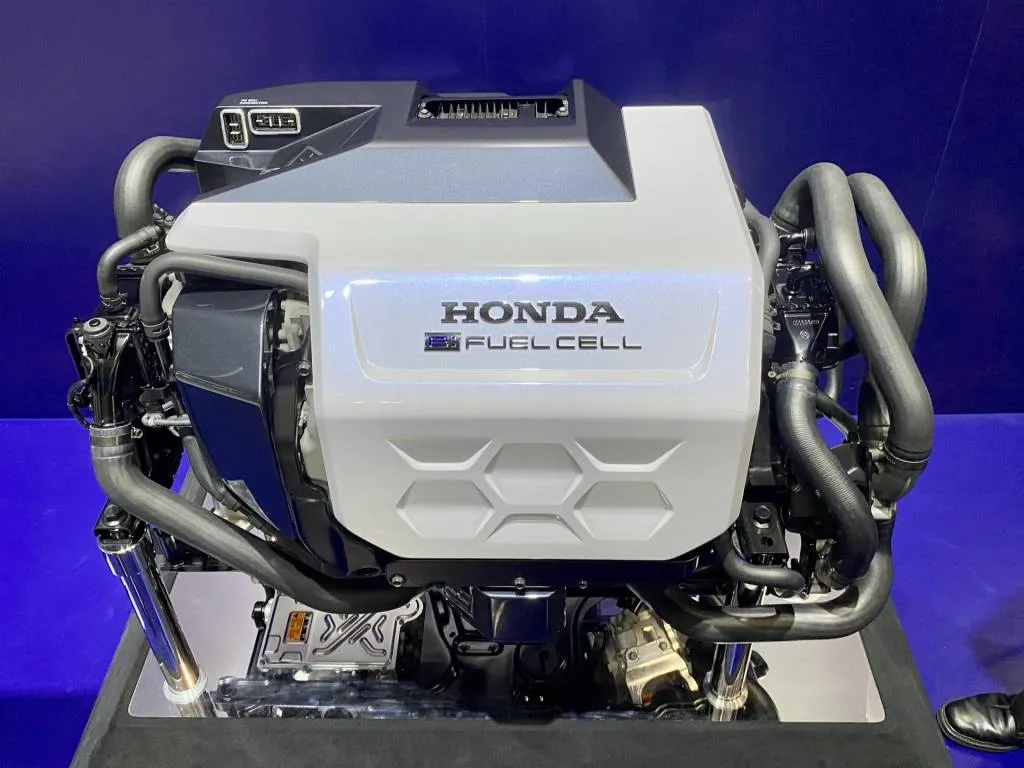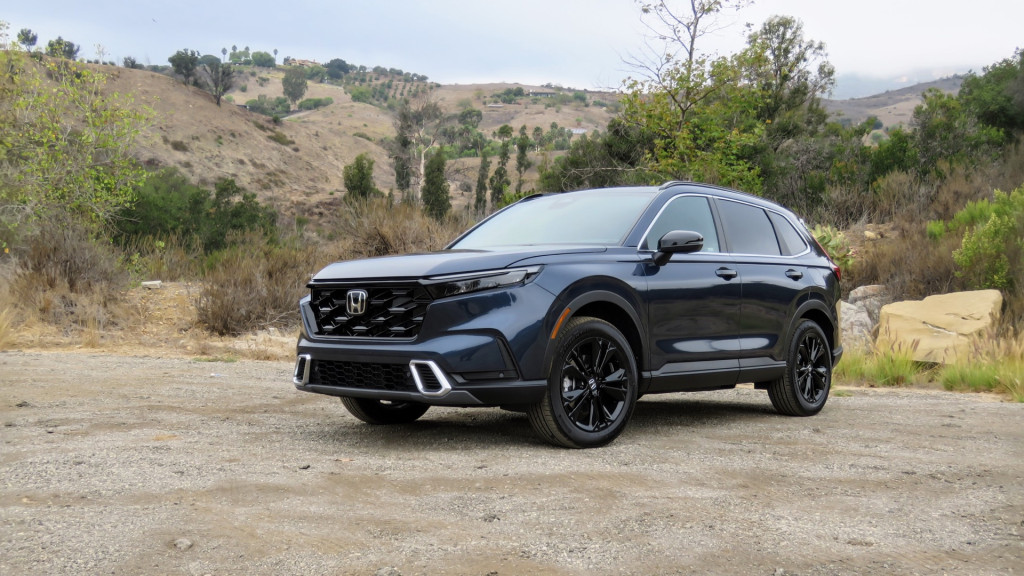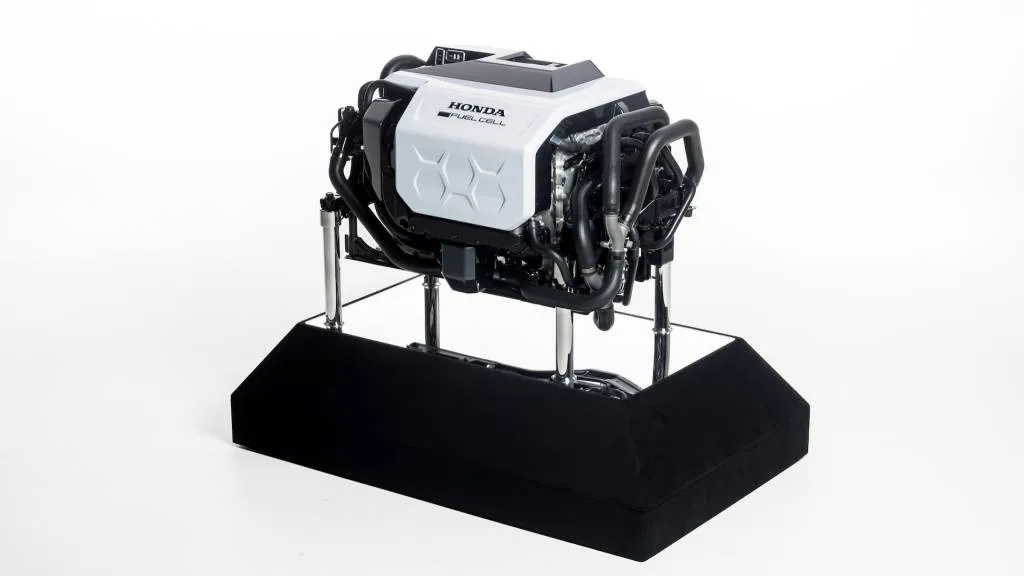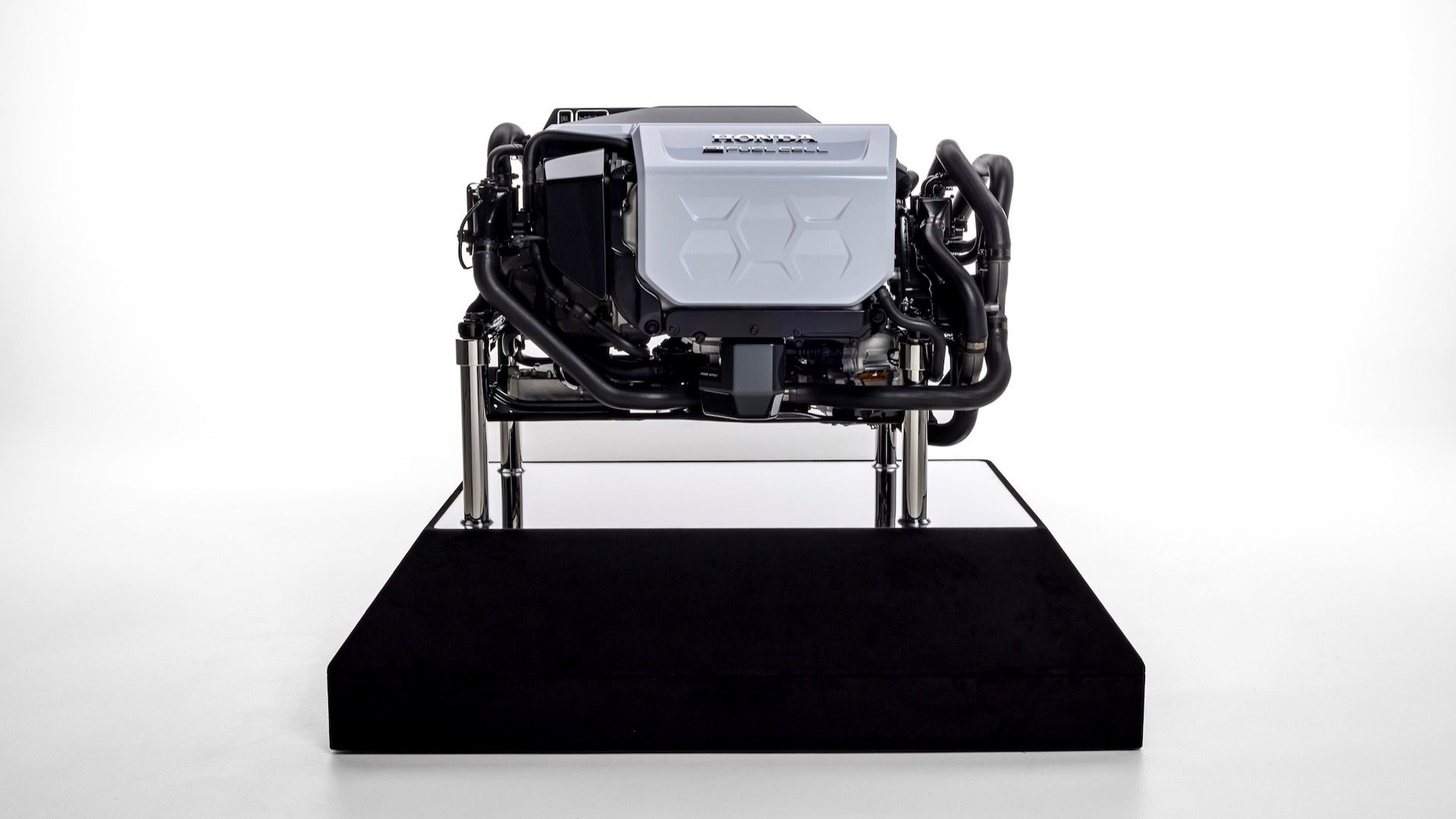Honda this week provided a few more details about its next-generation fuel-cell module, at the 2023 European Hydrogen Week in Brussels.
Co-developed with General Motors, the new module was first shown at the 2023 Tokyo auto show, and it has already been confirmed for use in North America. Honda has already confirmed a Europe-bound energy storage system that combines renewable energy with hydrogen. But this is the first time Honda has discussed other applications for Europe, including passenger cars, commercial vehicles, construction equipment, and stationary power generation.

Honda next-generation hydrogen fuel-cell module - 2023 Tokyo auto show
Improvements over previous fuel-cell systems include compact dimensions, as well as quick startup times—even in low temperatures, Ingo Nyhues, deputy general manager, Europe business planning and development, Honda Motor Europe, said in a statement.
This system will make its debut for North America in a version of the Honda CR-V—set to be Ohio-built starting in 2024. The hydrogen CR-V follows the Clarity Fuel Cell, which was introduced with the last-generation fuel-cell stack from Honda, in 2017.

2023 Honda CR-V Hybrid
The next-generation system is also due to be deployed in a fuel-cell semi—in a project with Isuzu. The two companies plan to start demonstration runs of a prototype fuel-cell truck on public roads by the end of March, with a production model following in 2027.
Honda partner GM has also emphasized plans to put fuel cells into semis, collaborating with truck manufacturer Navistar to build a fleet of 2,000 hydrogen semis. But unlike Honda, GM has distanced itself from the idea of using fuel cell tech in passenger cars—something the U.S. automaker had worked on for decades.

Honda next-generation hydrogen fuel-cell module
Honda is also involved in a project exploring the possibilities for hydrogen internal combustion—for motorcycles especially. This simply burns hydrogen in a combustion engine instead of fossil fuels, whereas fuel cells use hydrogen to generate electricity that powers electric motors.
Whether it's fuel cells or hydrogen combustion, limited availability of hydrogen will likely remain an obstacle. According to the Department of Energy (DOE), there are just 59 U.S. hydrogen stations at present—with all but one of those publicly accessible. That follows a decades-long pattern of deployment lagging the industry's promises. Based on industry commitments, the California Air Resources Board (CARB) in 2021 projected 100 retail hydrogen stations in operation by the end of 2023.


















